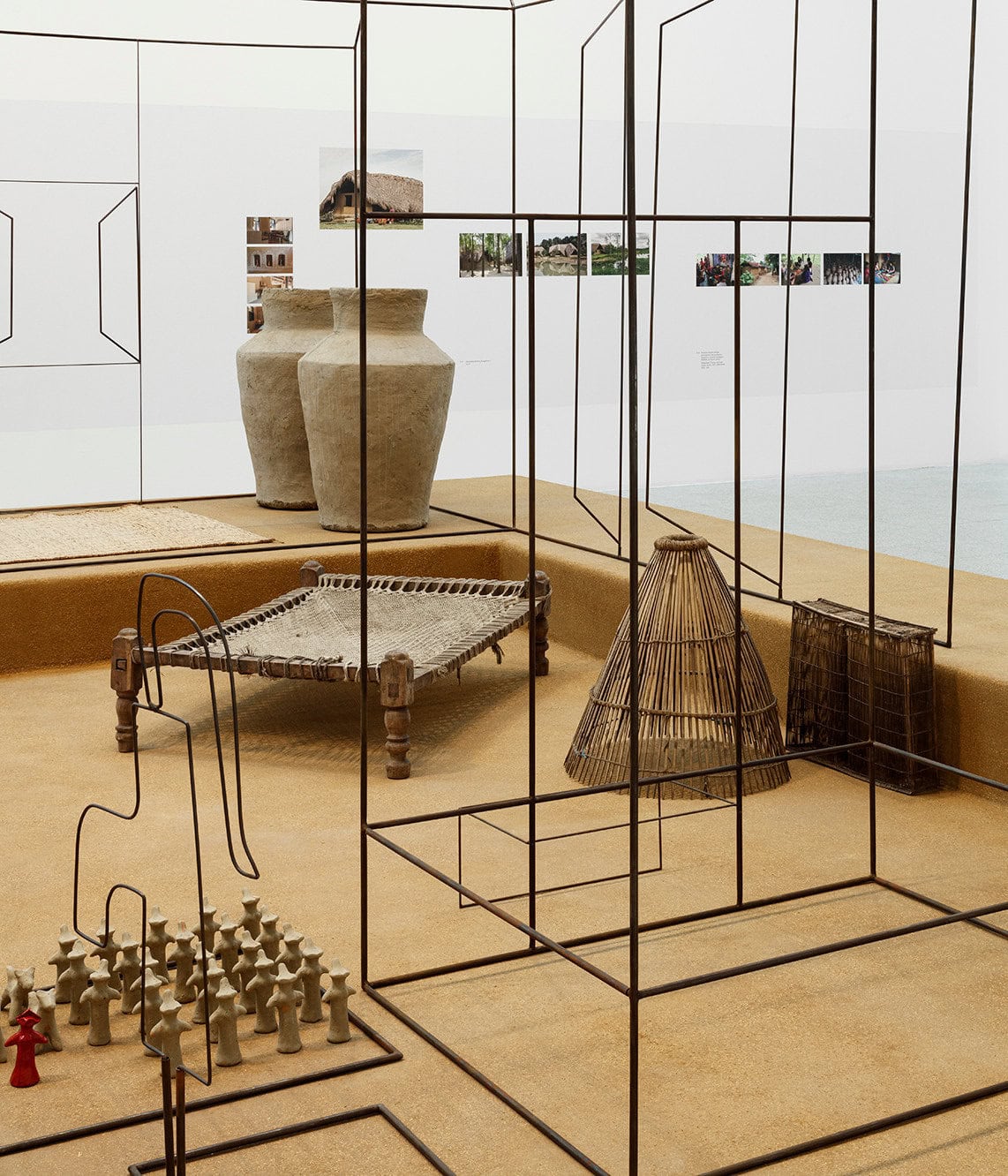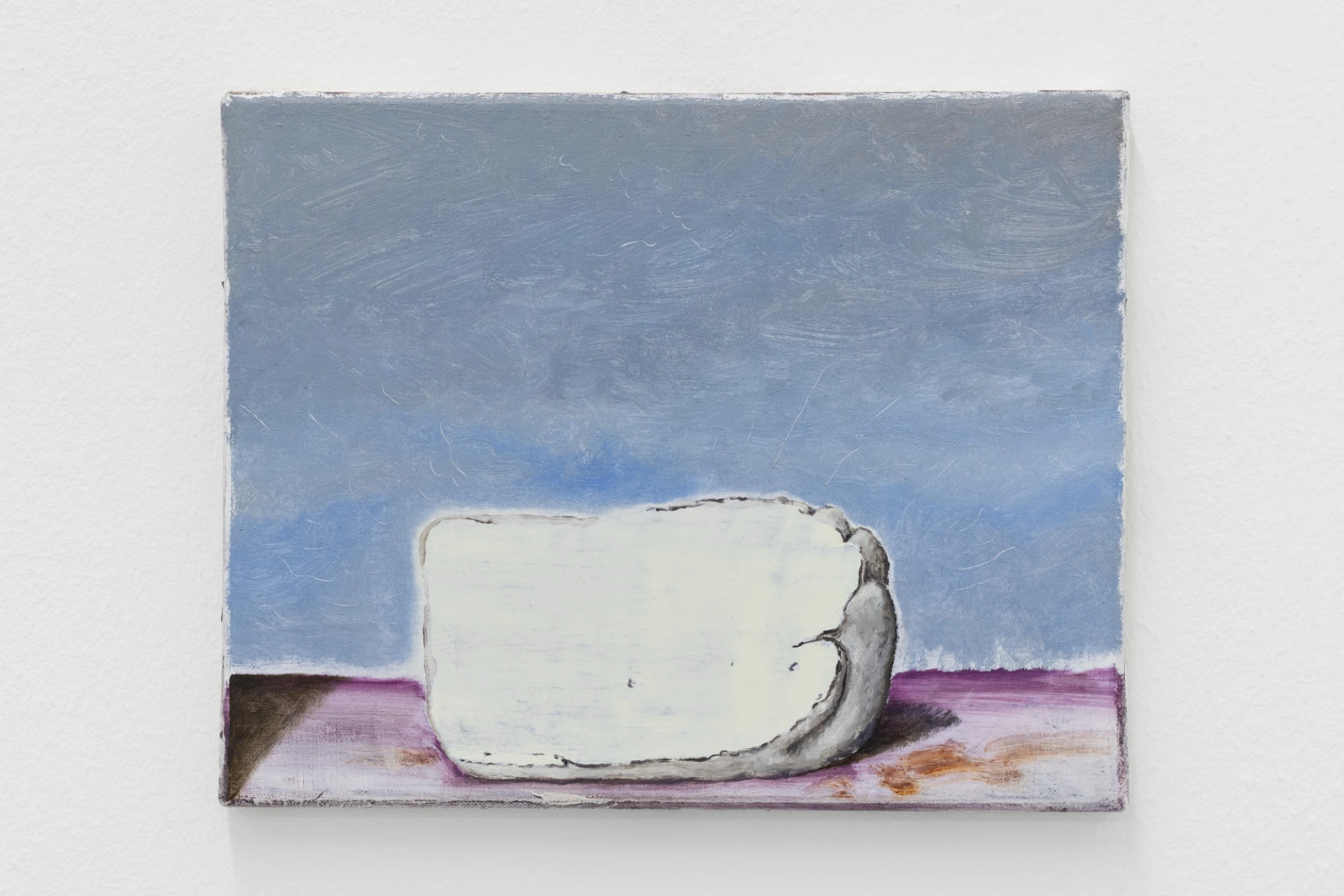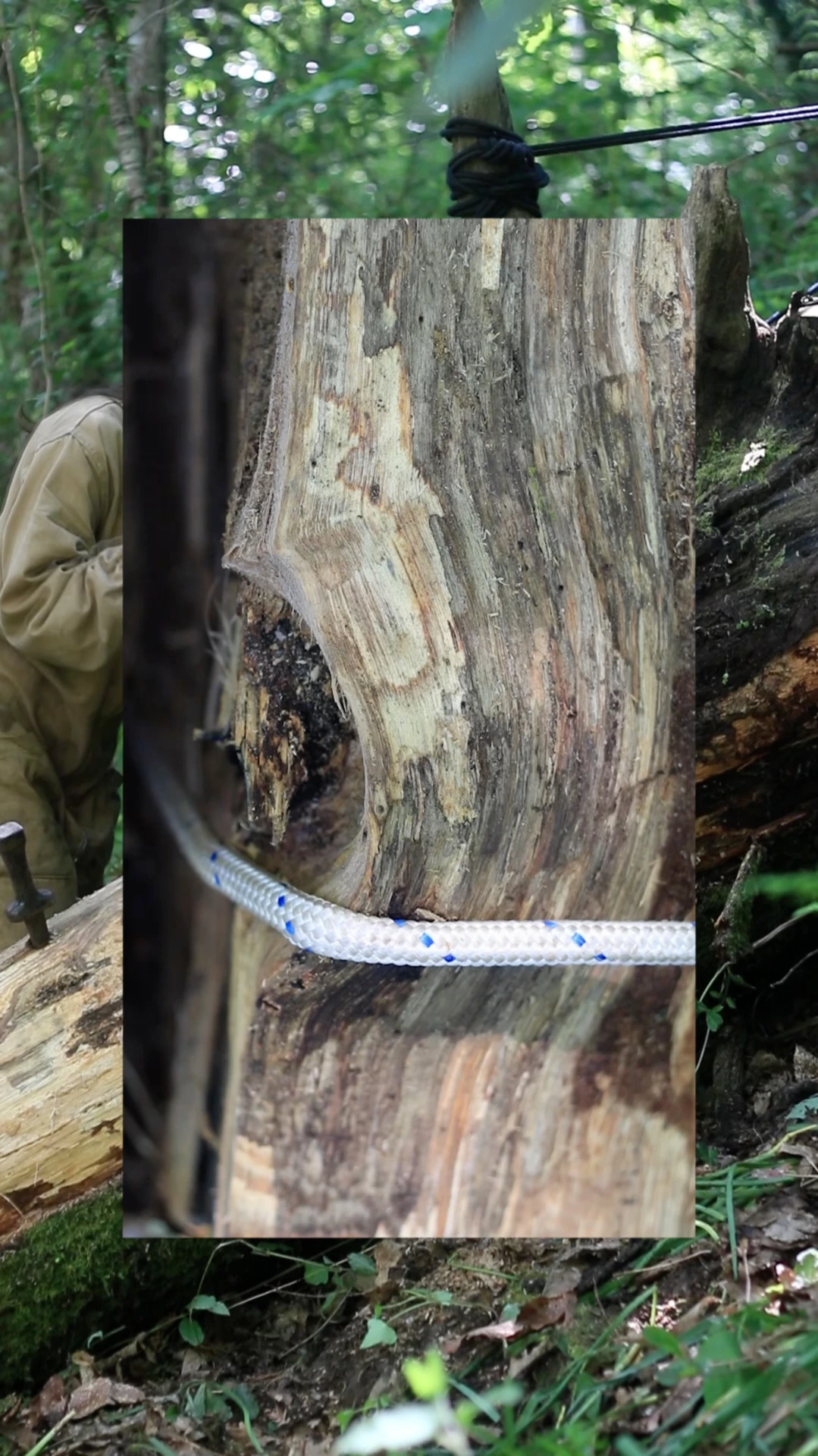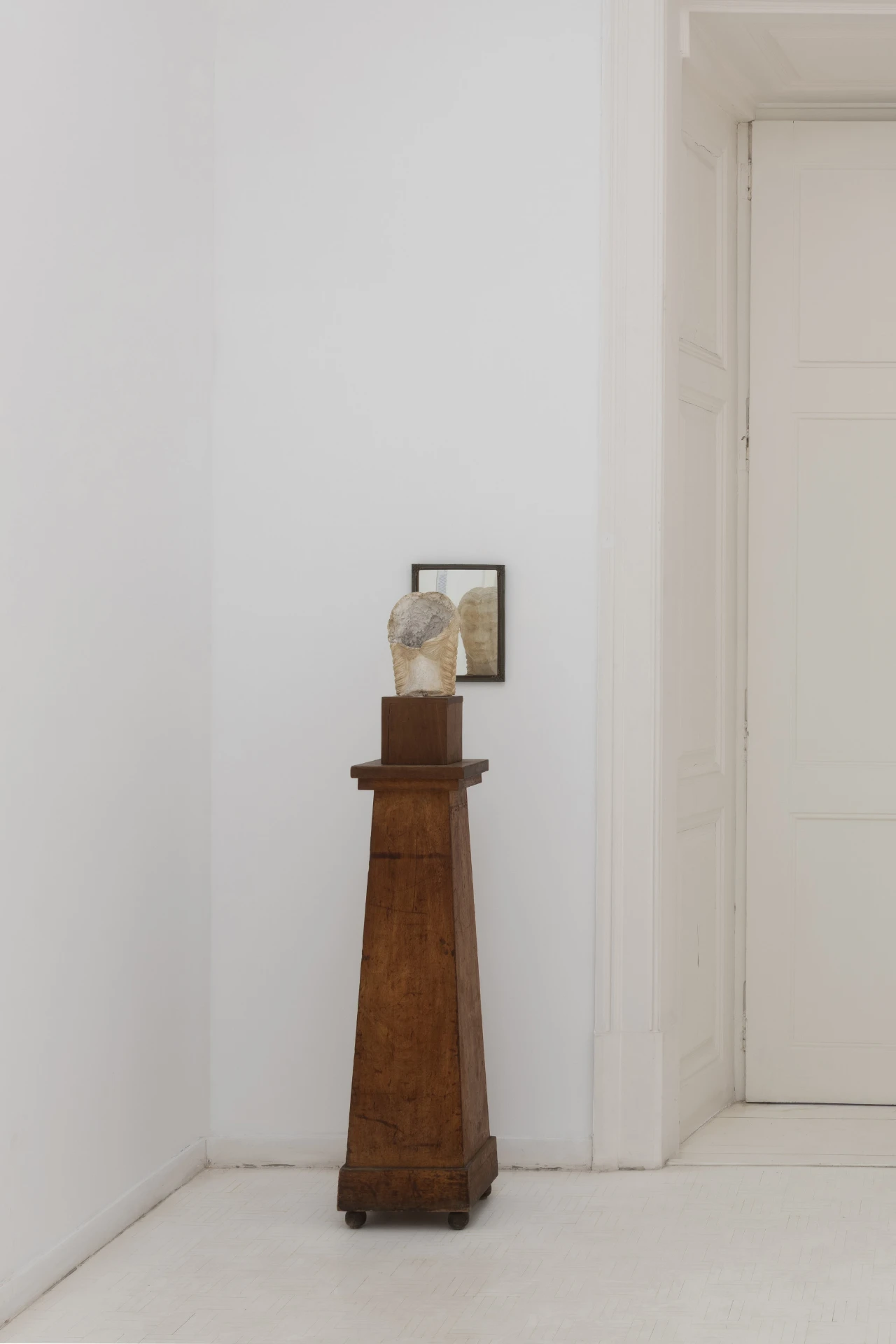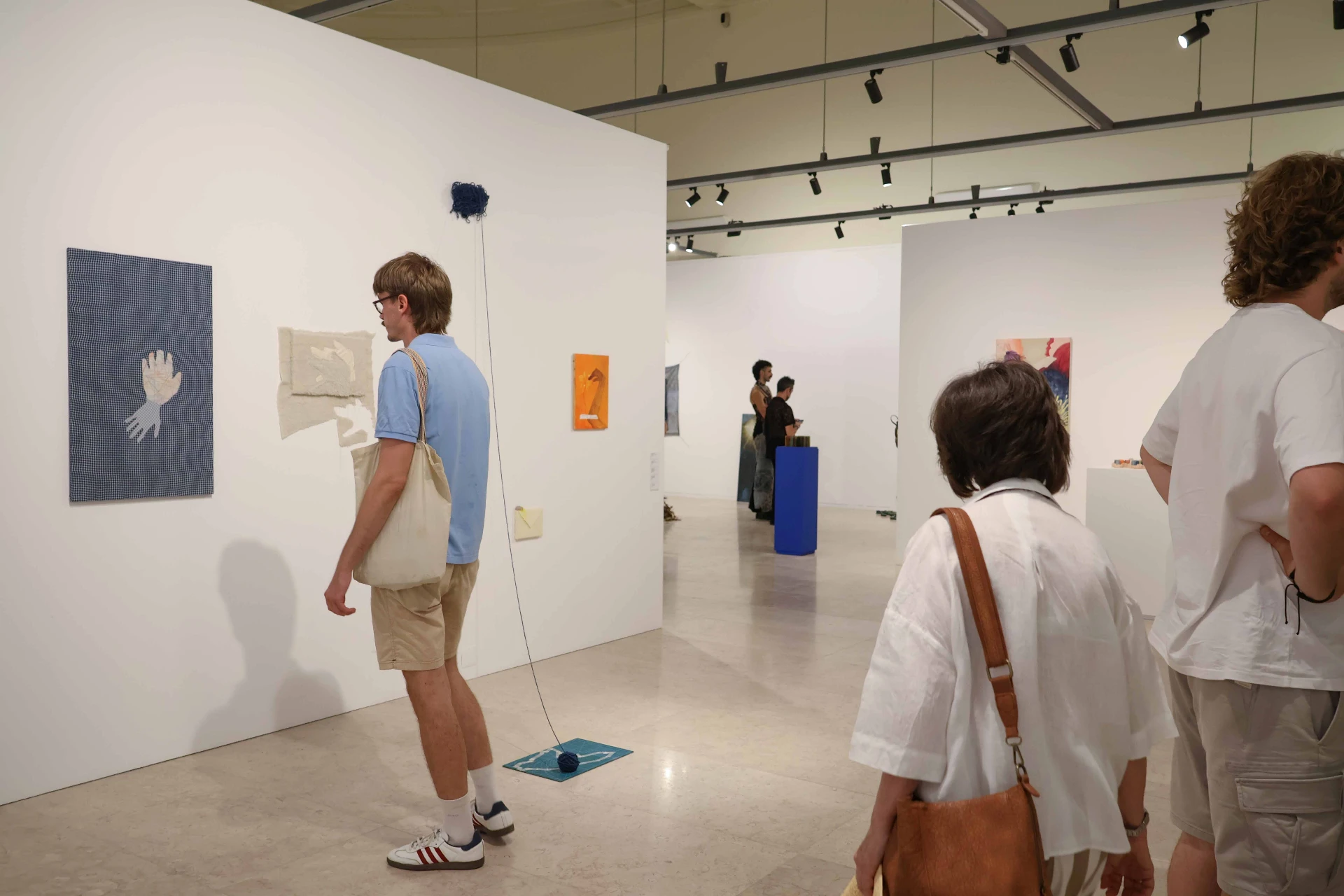Isabel Cordovil’s exhibition A Vaidade Praga-me features an astonishing chandelier toppled onto the floor in the first room. The carved ceiling is nowhere near its traditional spot, and everything seems to be upside down.
Empty plinths, burning candles, and brown, exquisite wings symbolise Icarus in his tragic, overwhelming fall.
There is an impression of an end, a border or a threshold throughout the exhibition. Something is about to crumble, to escape, to finish and, in the meantime, to succeed itself as the wake of a journey.
Narratives which are slightly apologetic and apocalyptic follow one another. In fact, as in Strange String, some even suggest that the end could also be a choice – or, as the exhibition’s curator Filipa Oliveira puts it, a “manipulation of time”.
The artist encourages us to ponder the idea of an end and, simultaneously, an afterwards, shrouded in an experience of emptiness. Filipa Oliveira clarifies: “In her practice, especially in this exhibition, Isabel Cordovil meditates on the aftermath of the end, the ‘after-party’. Between longing, dreaming and reality, Cordovil addresses the idea of an emptiness (almost existential) because perhaps the end is already over; we erroneously find ourselves living in an ‘after-party’, in a post-climax.”
As such, the end is considered to be a gateway, a harbinger, unquestionably approaching its end, a state of unavoidable and sometimes agonising waiting.
The artist, on the one hand, reaffirms this finality, this past, with her simplest gestures. On the other, she appears to be rushing towards a future, pushing for a disruption.
The video Pele is projected onto a wall. The artist is tearing up old wallpaper in an ancient house. The same gesture unleashed an intense memory of another intervention, made during Alternativa Zero in 1977, a much different context from the one proposed by the artist Isabel Cordovil. Forty-seven years ago, Ana Hatherly energetically shredded thirteen large panels, covered in white paper and laid out throughout the historic Galeria Quadrum. During the performance, the artist was filmed and photographed as she tore the long sheets, in a gesture full of meaning, echoing the Carnation Revolution’s spirit.
One could say that, to some extent, tragedy also appears to be dealt with in Isabel Cordovil’s exhibition, even if indirectly. It brings to mind Deleuze’s “original contradiction”.
Firstly, the exhibition is intoxicating with its forms and beautiful elements. Is Apollo, with his disguising abilities, soothing gravity, decadence and all kinds of endings? Or is it Dionysus making suffering manifest, affirming life?
(In tragedy, and when it comes to emphasising life, we are also reminded of Beuys’ philosophy).
Apollo is like this figure who mitigates the individual’s pain and suffering, using his ingenious ploys and endeavours. For his part, Dionysus makes life visible and pain crystal clear: “Apollo triumphs over the individual’s suffering with his shimmering glory, wrapping eternity in appearance”, he erases pain (…). Conversely, Dionysus reverts to primitive unity, destroys the individual, drags him down into the grand wreck and absorbs him into the original being; he thus reproduces the contradiction as the pain of individuation, but settles them into a higher pleasure by allowing us to partake of the superabundance of the unique being or the universal will.”[1]
The exhibition is at Galeria Municipal de Almada until June 16.
[1] Deleuze, G. (1976) Nietzsche and Philosophy. Editora Rio – RJ.

